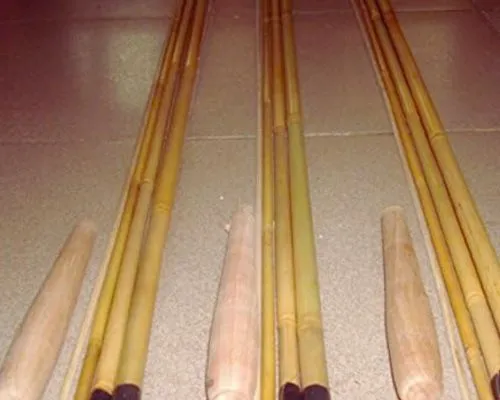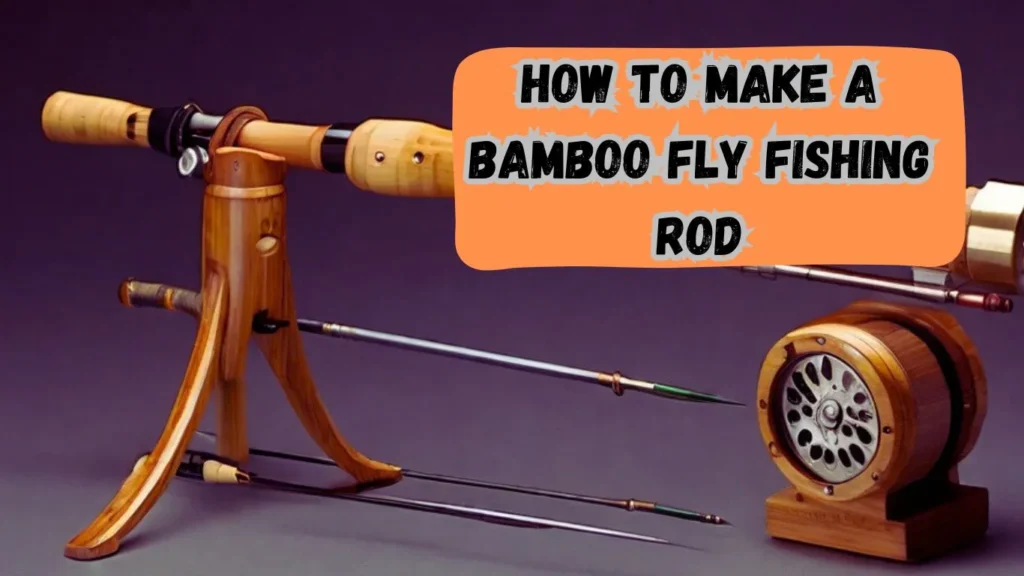Embark on a journey of craftsmanship and angling prowess as we delve into the art of creating your very own bamboo fly fishing rod. In this comprehensive guide, we’ll walk you through each step of the process, from selecting the finest materials to assembling and finishing your masterpiece. Whether you’re a seasoned angler looking to deepen your connection to the sport or a newcomer eager to explore the world of rod building, this article is your gateway to a rewarding and fulfilling hobby.
How to Make a Bamboo Fly Fishing Rod
Learn to craft your own bamboo fly fishing rod with our step-by-step guide. We’ll help you select the finest materials and guide you through the entire process, from preparing the bamboo to testing and fine-tuning your creation. Whether you’re a seasoned angler or a newcomer to rod building, this article is your gateway to a fulfilling hobby.
Start by selecting high-quality Tonkin bamboo known for its strength and flexibility. Prepare the bamboo by splitting it into strips and meticulously planing each spline. Assemble the splines into a blank using high-strength adhesive and binding string, ensuring a secure bond. Heat treat the blank to enhance its strength and resilience. Attach metal ferrules for easy assembly and disassembly of rod sections. Wrap guides, ferrules, and other components to the rod blank using thread, then apply multiple coats of varnish for protection. Mount the reel seat securely to the rod blank, and install a grip that suits your preferences and fishing style. Finally, test your rod on the water and fine-tune its performance for an optimized angling experience.
How to Make a Bamboo Fly Fishing Rod:
Selecting the Right Bamboo
Before you can begin crafting your fly fishing rod, you’ll need to acquire high-quality bamboo. Look for seasoned Tonkin cane, renowned for its strength, flexibility, and resilience. Tonkin bamboo, native to the mountainous regions of China, possesses the ideal characteristics for rod making, ensuring optimal performance on the water. When selecting your bamboo culms, prioritize straightness, uniform thickness, and absence of nodes or defects.

Preparing the Bamboo
To prepare the bamboo for rod construction, it must undergo several critical steps. Begin by carefully splitting the culms into individual strips, or “splines,” using a specialized hand tool known as a splitting jig. Next, meticulously plane each spline to achieve consistent dimensions and taper, paying close attention to the precise angles and measurements specified for your desired rod design.
Gluing and Binding
Once the splines have been planed to perfection, it’s time to assemble them into a blank. Apply high-strength adhesive along the mating surfaces of the splines, ensuring a secure bond that will withstand the rigors of casting and fighting fish. With the splines aligned, use binding string to tightly wrap the blank, exerting uniform pressure to promote adhesion and eliminate gaps between the splines.
Heat Treating
Heat treating is a crucial step in the bamboo rod making process, enhancing the material’s strength, resilience, and casting performance. By subjecting the blank to carefully controlled heat, you’ll temper the bamboo fibers, reducing internal stresses and increasing the rod’s overall durability. Exercise caution during this process to avoid overheating or scorching the bamboo, which can compromise its structural integrity.
Ferruling and Fitting
Ferruling involves attaching metal ferrules to the rod blank, allowing for convenient assembly and disassembly of rod sections. Select high-quality ferrules that complement the aesthetic and performance of your rod, ensuring a snug fit with minimal play. Take precise measurements to achieve proper alignment and fit between ferrule and blank, facilitating smooth transitions between rod sections while minimizing weight and bulk
Wrapping and Varnishing
Wrapping refers to the process of securing guides, ferrules, and other components to the rod blank using thread. Choose thread colors and patterns that complement the aesthetic of your rod while providing functional reinforcement. Once the components are wrapped in place, apply multiple coats of high-quality varnish to protect the thread wraps and enhance the rod’s appearance. Sand and polish the varnish between coats to achieve a smooth, glossy finish.
Mounting the Reel Seat
The reel seat serves as the interface between angler and rod, providing a secure mounting point for the fishing reel. Select a reel seat that matches the aesthetics and performance requirements of your rod, taking into account factors such as material, design, and ergonomics. Use precision tools to mount the reel seat securely to the rod blank, ensuring proper alignment and stability during casting and retrieval.
Installing the Grip
The grip, or handle, of the fly fishing rod plays a crucial role in angler comfort and control. Choose a grip material and design that suits your personal preferences and fishing style, whether it’s traditional cork, modern synthetic materials, or exotic hardwoods. Carefully shape and finish the grip to achieve optimal ergonomics and tactile feedback, enhancing your connection to the rod and improving casting accuracy.
Testing and Fine-Tuning
With the rod fully assembled, it’s time to put it to the test on the water. Head to your favorite fishing spot and spend some time casting and fishing with your newly crafted bamboo fly rod. Pay attention to its performance, noting any areas for improvement or adjustment. Whether it’s tweaking the action, fine-tuning the balance, or refining the aesthetics, don’t hesitate to make necessary modifications to optimize your rod’s performance and your angling experience.
FAQs (Frequently Asked Questions)
Can I use any type of bamboo for making a fly fishing rod?
Absolutely not. While bamboo is a versatile material, not all varieties are suitable for rod making. Tonkin bamboo, prized for its strength and flexibility, is the preferred choice among rod builders.
Do I need specialized tools to make a bamboo fly rod?
While certain tools are essential for the rod making process, such as a splitting jig, planing forms, and binding string, many can be crafted or improvised using readily available materials.
How long does it take to make a bamboo fly rod?
The time required to make a bamboo fly rod can vary depending on factors such as skill level, complexity of the design, and availability of materials. However, expect to invest several weeks or even months in the process from start to finish.
Is it cost-effective to build your own bamboo fly rod?
Building your own bamboo fly rod can be a labor of love rather than a cost-saving measure. While the initial investment in materials and tools may be significant, the satisfaction of crafting a unique and personalized rod is priceless for many anglers.
Can I customize the design of my bamboo fly rod?
Absolutely! One of the joys of building your own rod is the ability to customize every aspect of its design, from the taper and action to the aesthetics and hardware.
Conclusion
Crafting your own bamboo fly fishing rod is a deeply rewarding endeavor that combines artistry, craftsmanship, and angling expertise. By following the steps outlined in this guide and infusing your unique creativity and passion into the process, you’ll not only create a functional fishing tool but also a cherished heirloom that embodies the spirit of angling tradition. So roll up your sleeves, sharpen your tools, and embark on a journey of discovery and fulfillment as you craft the rod of your dreams.
Also Read>>
What Should be ideal size Rod for Striper Fishing




